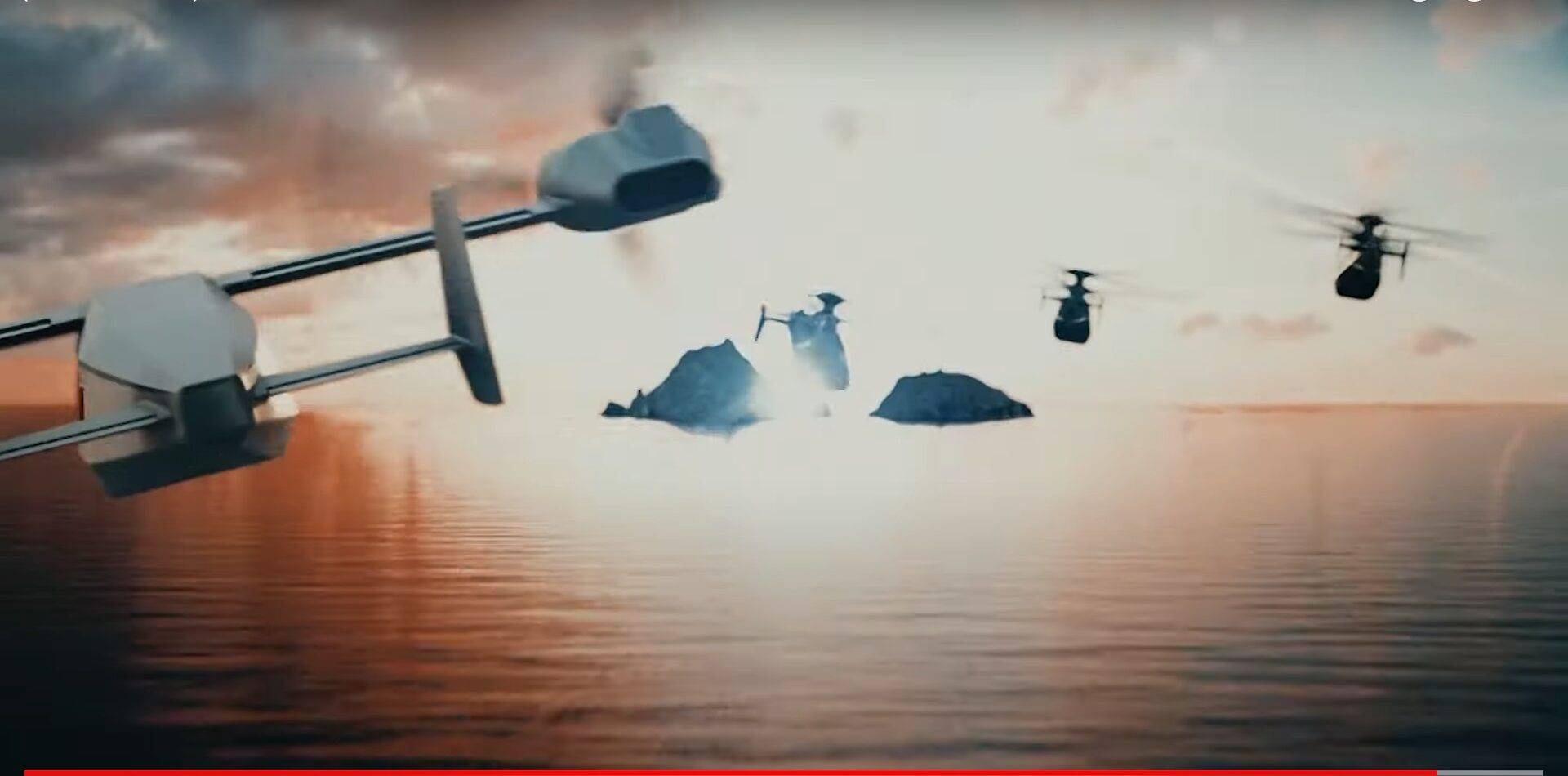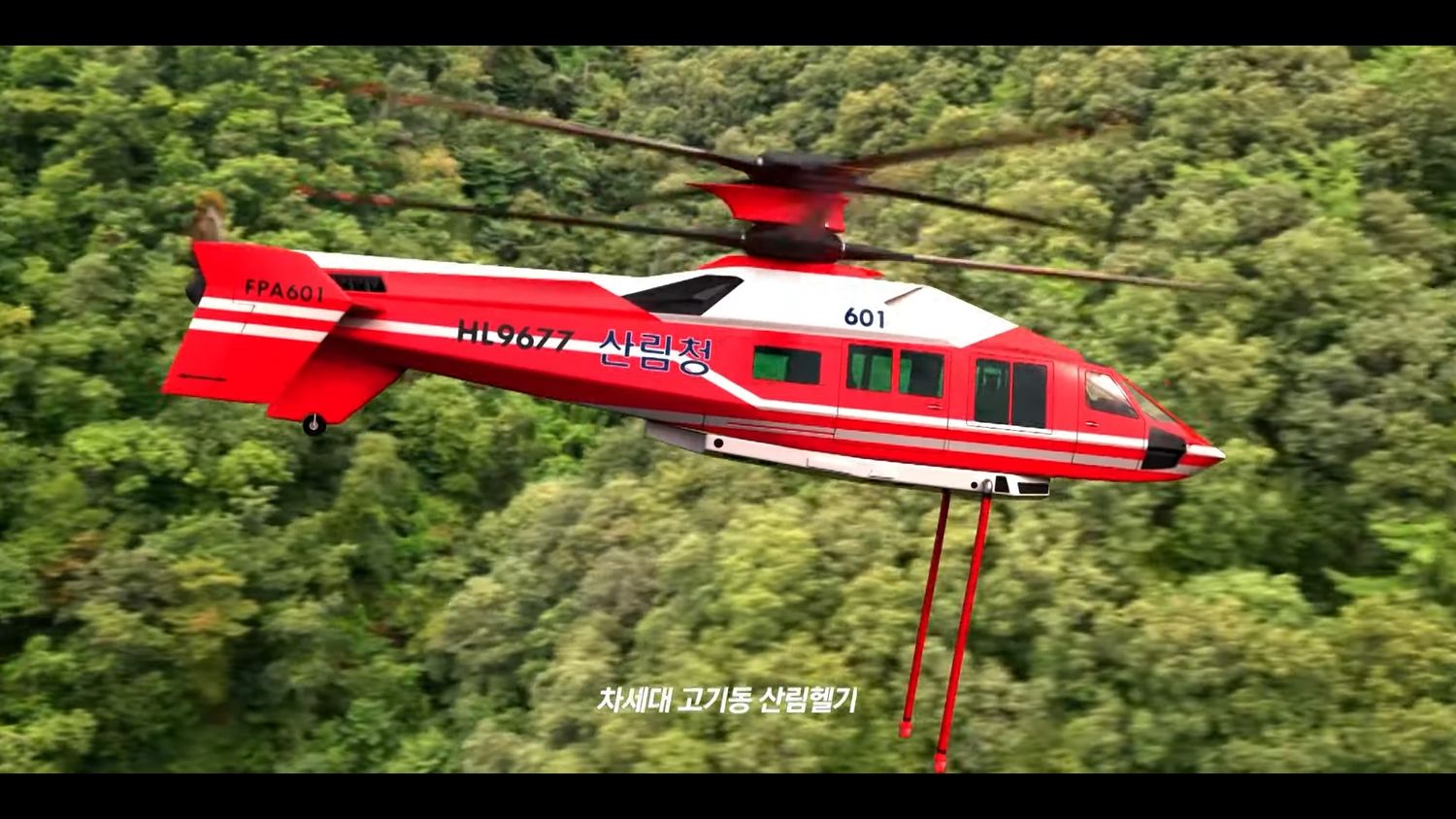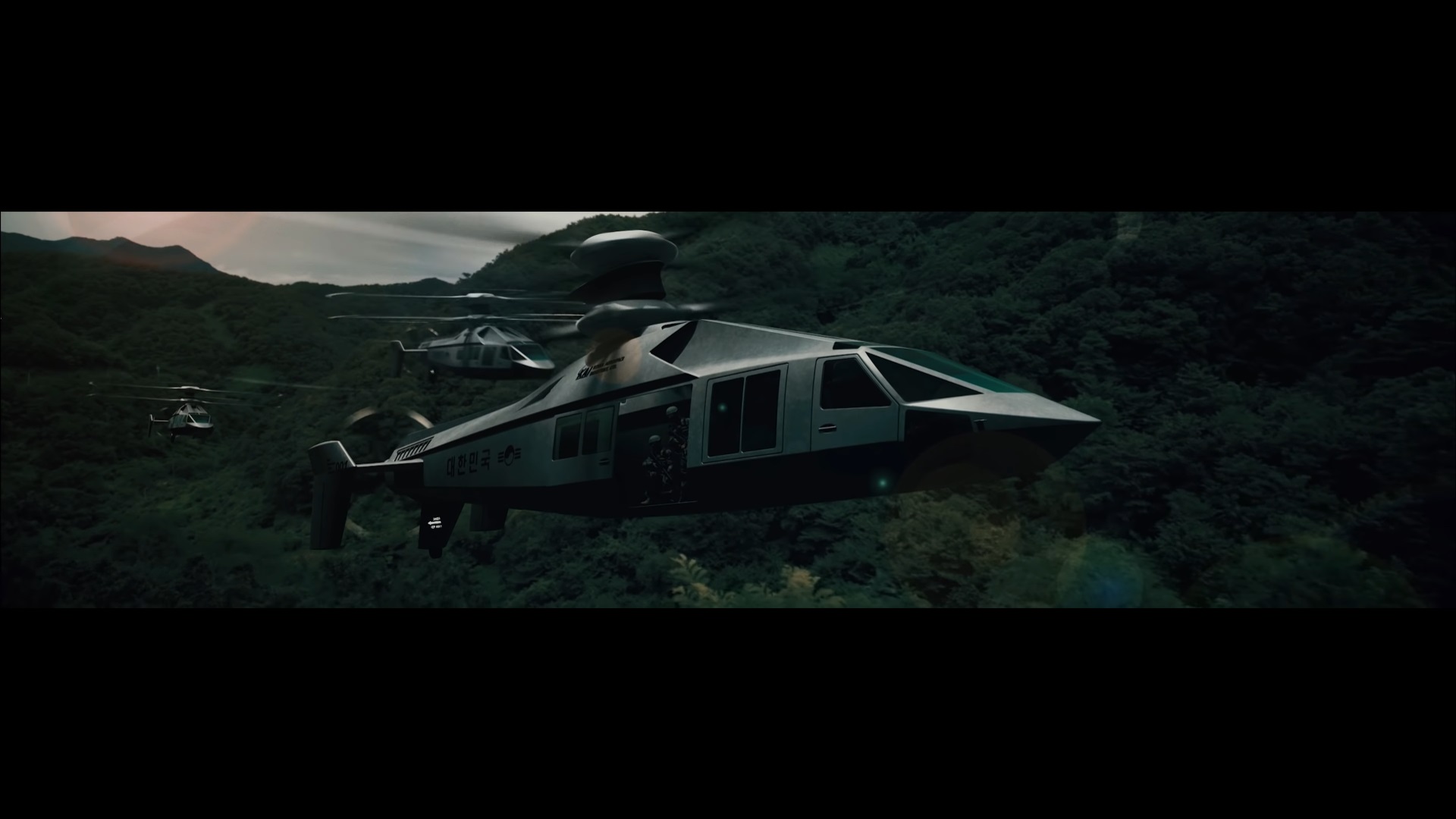Korea Aerospace Industries is working on its next generation of helicopters
Korean aerospace giant KAI (Korea Aerospace Industries) released a new video in which, towards the end, it hinted at its next-generation vertical takeoff aircraft concept.
Initially the video shows the different variants of the Surion helicopter -the first developed by KAI-, particularly the versions dedicated to security, search and rescue, community assistance and firefighting tasks.
Then a couple of developments being pursued to enhance the Surion’s capabilities are shown. One is a newly designed belly tank, which is installed under the fuselage and will be useful for aerial-applicator missions for the agricultural industry and will also be used to drop water to attack forest fires (a problem that is growing globally at an alarming rate).
The next development shown is a new, locally designed gearbox for Surion helicopters… and then comes the best part.
Starting at minute 3, KAI surprises the unwary viewer by showing a rendering of the next-generation helicopter concept it is working on.
The clips shown are part of a promotional video KAI played during the Seoul International Aerospace and Defense Exhibition 2021 (ADEX 2021), where it revealed several futuristic concepts it has been working on.
The next generation is taking shape
The premise is to fly faster, go farther and carry more weight, than current helicopters. Using the same gearbox under development for the Surion, KAI would be designing an entirely new aircraft around it.
KAI’s concept rendering shows a helicopter that makes use of coaxial composite rotors and rear thrust propeller to achieve high speed, while also providing a high degree of maneuverability, stability, and payload capacity.
If the configuration looks familiar, it’s because it’s the same one used by Sikorsky/Boeing on its Defiant X. This next-generation aircraft is competing against Bell to win the U.S. Army’s FLRAA (Future Long Range Assault Aircraft) program, which is looking for a replacement for its Black Hawk helicopters beyond 2035.
The requirements for the future aircraft that must replace the current generation of helicopters are more or less the same. Be faster, have more range and carry more cargo. So, the helicopters of tomorrow will most likely resemble each other. Same problems, same solutions.

But there may also be another explanation for the resemblance between KAI’s concept and the Defiant X. There is a long history of cooperation between KAI and Lockheed Martin (LM) following the licensed manufacture in Korea of the F-16.
That then continued with technical assistance provided to KAI by the U.S. defense giant in the development of the T/FA-50 Golden Eagle, which is an advanced trainer and light attack aircraft that uses many elements of the F-16. LM also provided technical advice for the development of the KF-21 Boramae.
It is logical to assume that KAI will again seek the help of Lockheed Martin, as it owns the legendary helicopter manufacturer Sikorsky since late 2015.
More than one design in development
Towards the end of both videos (the one recently released and the one shown during ADEX 2021), a trio of KAI’s future coaxial rotor helicopters fly towards the horizon, a new concept they are working on is seen from behind.
It would be a tiltrotor aircraft. Currently there are only two companies in the world that produce aircraft with these characteristics, the American Bell with its famous V-22 Osprey and the Italian Leonardo with the AW609.
However, from what little can be seen in the video, the configuration seems to be inspired by the more advanced Bell V-280 Valor, a new generation tiltrotor that competes with the Defiant X for the top spot in the US Army’s FLRAA program.

So, KAI is developing not just one, but two futuristic helicopter concepts, which could end up being in the same technological league as the V-280 and Defiant X from Bell and Sikorsky.
Clearly, we have only just seen concept designs, and there is a long way to go before either (or both?) of these projects reach the flight prototype stage, but KAI seems confident in its capabilities and is showing which path it will take to realize its plans to become one of the world’s leading aerospace companies.




Para comentar, debés estar registradoPor favor, iniciá sesión